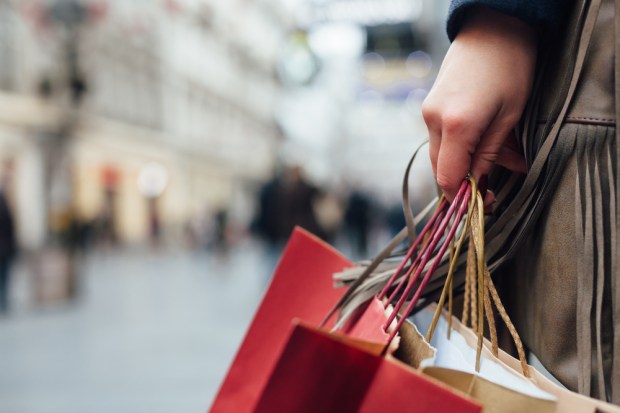Top 5 Retail Stories Of 2017

It’s 2018! That means that now, whenever people perceive something as backwards, unfashionable or antiquated, they’ll be quick to say it’s “so 2017.” But let’s not be so quick to write off the old year just because the new one has arrived. A lot of good things happened in retail in 2017. Here are a few favorites that our readers clicked and clicked again.
Goodbye, Old Year; Goodbye, Signing on the Dotted Line
Mastercard announced in October that it would be eliminating all signatures at the point of sale by April 2018. (That’s only three months away now!) Already, more than 80 percent of Mastercard transactions in North America require no cardholder signature at checkout, but the issuer has decided to go that last mile and just do away with the archaic practice altogether.
The signature is a holdout from the days of plastic-only cards — when the scribble on the back of the card actually meant something, and the scribble on the receipt was supposed to match it. However, in a retail environment that rides on EMV chips and emerging biometric authentication methods, requiring a signature at checkout merely slows down the process for customers in line.
However, Mastercard does plan to let individual merchants decide if they would still like to require a signature for bigger-ticket purchases. If it makes them feel more secure to require it, said the company, then there is no reason not to give retailers the power to make that choice.
New Year, New You? Or Is That a Fraudster on Your Account?
Account takeover fraud went through the roof in 2017. PYMNTS got the inside scoop on this troubling trend from friendly neighborhood fraudster Bern Ersell, CFO of an international fraud syndicate, who took the time to explain why this method has become so popular.
Easy: because it’s easy, Ersell said. Everyone talks about fraud but not enough companies are taking it seriously enough to effectively keep fraudsters like him at bay. From first-time online buyers to corporate executives, everyone’s making the same dumb mistake, said Ersell: They’re all using weak passwords — oftentimes the same weak password across all the sites where they do business.
Fraudsters can hitch a free ride on that good business and make their fraudulent activity blend in with other transactions initiated by the customer, said Ersell. And, as more hacks make more consumer data available, it’s easier and easier to get inside those accounts in the first place.
Learn more from Bern Ersell — whose true identity is Sourabh Kothari, director of Merchant Advocacy at Signifyd — in our interview with a financial vampire.
Are We There Yet?
Wouldn’t it be nice to tell the car to pay for its own gas at the pump or buy the driver a cup of coffee at the drive-through window? Sensory CEO Todd Mozer agrees but said the platforms that exist in today’s cars aren’t good enough to support the voice-activated AI (artificial intelligence) commerce that consumers crave.
It’s true that cars are gradually getting more futuristic, but according to the PYMNTS/Visa How We Will Pay study, consumers are in a hurry to get there already.
Automakers have heard the message loud and clear. GM announced in October that it was introducing eCommerce to its dashboard operating system so that drivers can shop and book reservations from their car’s infotainment center (as long as the model is 2017 or later).
Merchants like Starbucks and Dunkin’ Donuts pay to appear on GM’s screens and enable this capability. The system can also help drivers find upgrades, accessories and care for their GM vehicle.
Aussie Amazon
American eCommerce giant Amazon launched Down Under on Dec. 5. Previously, its presence in Australia had been limited to the sale of books and apps. Buying products from the site came with onerous international shipping fees, deterring consumers and suppliers alike.
Now, with a local presence, Amazon can give Australian consumers access to the same wide variety of products and value proposition that are now one click away for their U.S. and U.K. counterparts — great prices and free delivery for its Prime members.
But the promise of product choice for Amazon is only possible if the suppliers interested in selling their products to those Australian consumers have an easy way to get paid by Amazon — in the currency of their choosing and in a transparent and efficient way.
That’s the gap that Hyperwallet, a leading global mass payout platform for digital marketplaces, will fill. Their solution will support international seller disbursements from Amazon’s new, Australia-based marketplace.
Vehicle Vending Machine
When consumers think “vending machine for cars,” only one name comes to mind: Carvana. The big, glass, used vehicle vending machines are a bit of a marketing ploy, admits the company, but it also shapes the customer’s experience.
The self-service platform allows customers to choose their own car and their own financing and complete a trade-in or other service. Then, when they show up at the lot, they receive a branded coin to insert into the vending machine to receive their vehicle of choice. The experience is entirely within the customer’s control.
Plus, the unusual business model saves Carvana a ton of overhead costs that would have been spent on salaries for salespeople, which enables the company to offer lower prices on cars. There’s definitely a larger lesson to be learned here for any merchant in the unattended retail business.
If we’re going to make something great again in 2018, please let it be used car sales.
